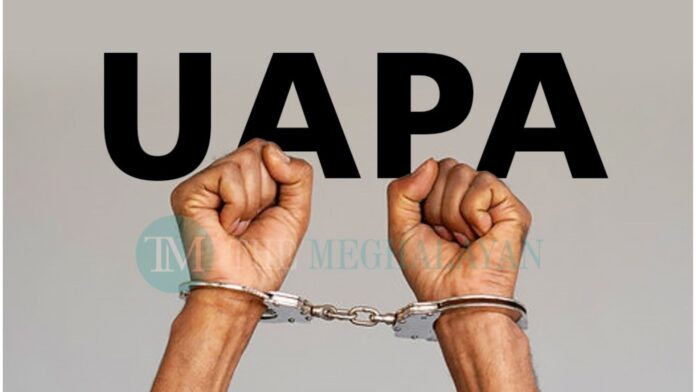GUWAHATI:
Following the withdrawal of the Armed Forces Special Powers Act (AFSPA) from parts of Assam, Manipur and Nagaland on March 31, a Delhi-based independent think-tank has called for an amendment to the Unlawful Activities (Prevention) Act, 1967 (UAPA) in the Northeast.
Citing the 2019-20 annual report of the Ministry of Home Affairs (MHA), which stated that there was a “significant decline in insurgency and reduction in violent incidents” in the region, the Rights and Risks Analysis Group (RRAG) has called for the amendment to the Act.
“The MHA, in its 2019-2020 annual report, had reported an overall 41 per cent reduction in violent incidents and 49 per cent reduction in Left wing extremism (LWE)-related deaths (397 to 202) in 2019 as compared to 2013, and significant decline in insurgency incidents by 70 per cent, casualties of security forces personnel by 78 per cent and civilian deaths by 80 per cent in the Northeastern region, it makes the case for amendments of the draconian provisions of the UAPA, especially relating to bail under Section 43 of the UAPA that takes away the discretion provided to the Court or Judge under Chapter XXXIII of the CrPC concerning the grant of bail,” said Suhas Chakma, director, RRAG. New Delhi.
Quoting the report of the National Crime Records Bureau (NCRB) from 2015 to 2020, the RAAG stated that a total of 9,334 persons were arrested in 5,934 cases under the UAPA across the country. The maximum number of UAPA cases were reported from Manipur (1965) followed by Jammu and Kashmir (1163), Assam (923), Jharkhand (501) and Uttar Pradesh (385).
“The maximum number of arrests under the UAPA have been reported from Manipur (2383) followed by Uttar Pradesh (1758), Assam (1052), Jammu and Kashmir (851) and Bihar (606),” said Chakma.
Highlighting the alleged misuse of the UAPA, the group said that it is surprising how Uttar Pradesh, the state with no state-specific designated banned organisation, arrested more people under the UAPA than Jammu & Kashmir, Assam, Bihar and Jharkhand.
“It raises questions as to whether the designated terror organisations are being targeted in the country or those who allegedly committed the offences of causing or intending to cause disaffection against India or offences punishable under section 153A (45 of 1860) or section 153B of the Indian Penal Code,” Chakma said.
Chakma went on to say that despite the police and the National Investigation Agency (NIA) aggressively pursuing the National Crime Records Bureau (NCRB) cases, the average rate of conviction was a mere 5.5 per cent in comparison to the average charge sheeting rate of 52.9 per cent each year during 2014 to 2020.
“The high rate of charge sheets vis-à-vis the very low rate of conviction as well as a considerably good number of acquittals and release on discharge by the court suggests that an overwhelming majority of those arrested and charge-sheeted on frivolous grounds or insufficient/without evidence leading to acquittal or release on discharge by the court. During the pendency of the trial, the detainees continue to rot in jail as jail, not bail has become the rule,” he said.


